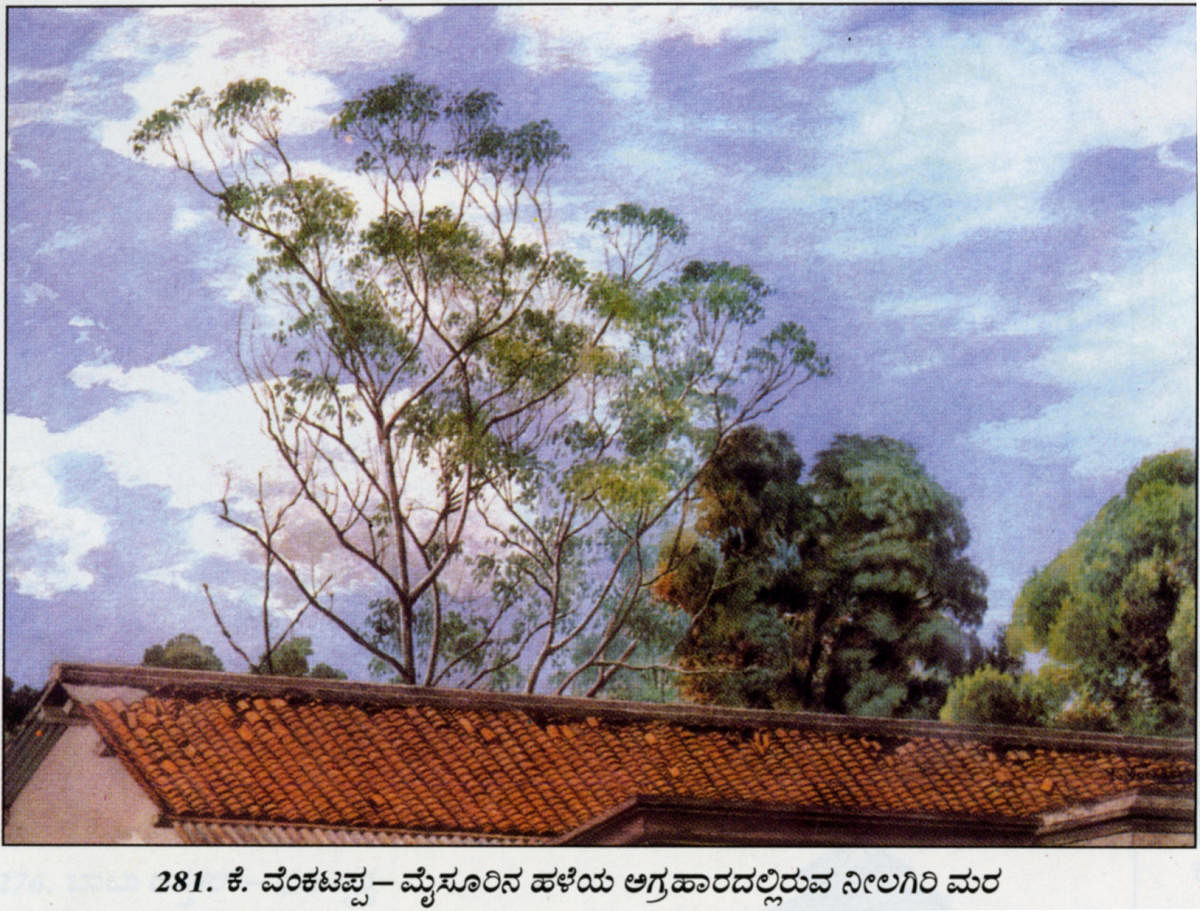


Born in 1886 into a traditional painter's family, K Venkatappa’s journey was a solitary one, peppered with several dramatic turns. Krishnappa Venkatappa’s early days started at the Mysore Palace. His father and grandfather were artists in the palace’s court. In fact, his father was mentored by Raja Ravi Varma, the master himself.
Venkatappa pursued his education in Mysore and then in Madras. From there, encouraged by the Maharaja, he moved to Calcutta and trained under the mentorship of Abanindranath Tagore, nephew of Rabindranath Tagore. Here, he was exposed to a bigger world of art at the Government School of Art, Calcutta, a hub for ‘nationalist expression’. He was a part of a team of painters commissioned by Lady Herringham to replicate frescoes at Ajanta. The team included Nandalal Bose, one of the pioneers of Indian modern art and Asit Kumar Haldar, a noted painter and sculptor of the Bengal School.
At Calcutta, Venkatappa took up commissioned work and met several influential artists and sculptors. His interest in art deepened, and he developed his own style.
Being an artist during the colonial time, nationalism was at a high point for many artists, including Venkatappa, who wanted to shun European and Western art forms. He specialised in watercolours, especially ‘tempera’ or washed technique.
Upon his return to Mysore palace from the world of art, he wanted to distance himself from the oil paintings of Ravi Varma as he wanted to create his niche. He created a style of his own in his efforts to stand out from other painters in the court.
New interest
Soon, he became interested in music and picked up the veena. He trained under Maestro Veene Venkatagiriyappa, who was an Asthana Vidwan (court musician) in Mysore, as well as two other legendary veena players Veene Subbanna and Veene Seshanna. He went on to experiment with the instrument and created a unique veena instrument, which is on display at Venkatappa Art Gallery in Bengaluru.
He was so engrossed in the world of music that he abandoned his paintbrush. On hearing about Venkatappa's dramatic turn, his guru Abanindranath conveyed his displeasure and asked him not to abandon painting. To this, Venkatappa replied with a painting titled ‘Made after Veena’, which depicts his love for music and painting.
His watercolour series of Ooty speaks volumes of the rich landscape and yet, conveys a sense of solitude, which can perhaps be interpreted as loneliness. His work on Kodaikanal landscapes and a few from Mysore stand out. The paintings are smaller in size compared to the life-size, heavy oil paintings of his contemporaries.
Venkatappa created several bas-relief plaster pieces, a sculptural technique in which the design is slightly raised above the flattened surface. The palace commissioned 26 panels, and a few such sculptures can be seen at the Venkatappa Art Gallery. His bas-relief work often included depictions of mythological characters, but Venkatappa stripped the myth from the characters and humanised them.
After the passing of Mysore’s Krishna Raja Wadiyar IV, art historians say he was asked to leave the palace. Others believe he left after a tiff with the palace due to a disagreement on compensation.
Turning point
Here, loomed another dramatic turning point in the life of the artist. His departure from the palace and the subsequent move to Bangalore in the 1940s marked the end of his creative endeavours.
Venkatappa is said to have filed several litigations, most falling short of justice in his favour. He was infamously called a serial litigator.
He remained an island unto himself at his home in Malleswaram. The artist chose not to marry as he believed it would be a distraction from his devotion to art. He found a spiritual connection that historians call ‘Aparigraha Vratha’, translating to self-reliance and self-dependence.
He stopped taking commissioned work, and stopped selling his art. However, he penned his everyday life in a series of diaries. His reactions to several events and day-to-day life can be read in never-changing handwriting for over 45 years, all said to have been written in pencil.
Venkatappa wished to start an art school in Bengaluru. Chitrakala Parishath was around at that time as a small gallery. It was in 1966 that the art school took off, but in 1965 the artist died, alone at his residence.
Post-independence, Karnataka officials were looking for cultural heroes to showcase from the state. Hence, the Venkatappa Art Gallery was set up in 1975. Art historians credit him as the state’s first modern artist.
The story of the gallery runs in parallel to that of the artist’s life. It saw its highs during the early days but it witnessed a downward spiral, mostly neglected and forgotten due to poor maintenance. The state government constituted the ‘Varnashilpi Venkatappa Award’ honouring the artist in the year 1993, which was last awarded in 2018.